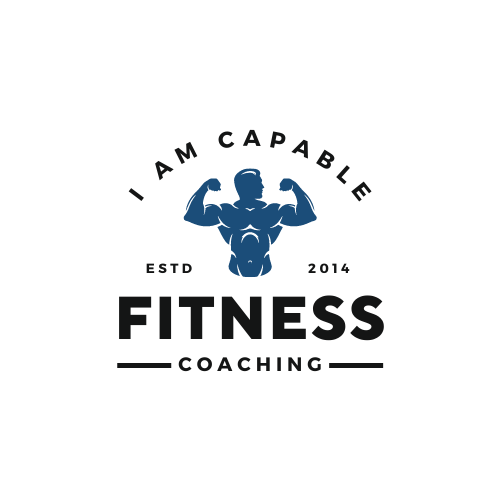Did you know that 50% of people quit their fitness coaching within six months? It’s a frustrating reality for many, but the good news is you don’t have to be part of that statistic.
At the start of a fitness journey, motivation is high. You’re excited about new goals, fresh workout gear, and a vision of a healthier you. But then, life happens. Work gets stressful, progress feels slow, and that morning run or evening gym session suddenly doesn’t seem so appealing.
This is the common cycle: enthusiasm → effort → obstacles → loss of motivation. It’s not just you, it’s a struggle for many faces.
But here’s the difference: those who stay consistent don’t rely solely on motivation. They build habits, structure, and support systems that keep them going even when motivation dips.
This guide will give you practical strategies for staying inspired, overcoming roadblocks, and building a long-term fitness mindset. Let’s make sure you stick with it!
The Power of Purpose: Finding Your Deep ‘Why’
Many people start their fitness journey with surface-level goals like “I want to lose weight” or “I need to get fit.” While these may be valid reasons, they often fail to provide lasting motivation. When challenges arise, vague or purely aesthetic goals can feel uninspiring, making it easier to quit.
The key to long-term consistency is finding a deeper purpose that connects fitness to what truly matters in your life.
Instead of focusing solely on weight loss or looking a certain way, shift your perspective to more meaningful motivations, such as:
- Health and longevity – “I want to stay active so I can play with my kids and avoid health complications.”
- Confidence and mental well-being – “Exercise helps me feel strong, clear-headed, and in control of my life.”
- Personal growth and resilience – “I want to prove to myself that I can commit to something and achieve it.”
When your motivation is rooted in personal values, fitness becomes more than a temporary pursuit, it becomes a lifestyle.

Action Step: Define Your ‘Why’
Take five minutes to reflect on your deeper reasons for working out. In a journal, complete this sentence:
“I want to stay consistent with my fitness routine because…”
Write freely and be as specific as possible. The clearer your purpose, the easier it will be to push through moments of doubt and stay committed to your journey.
Set SMART Fitness Goals That Keep You Engaged
Many people start with big ambitions, like “I want to lose 20 pounds in a month” or “I’ll work out every single day.” While enthusiasm is great, unrealistic goals can lead to frustration and burnout. When results don’t come fast enough, motivation drops, and quitting becomes tempting.
Instead, setting SMART goals keeps you engaged and on track. SMART stands for:
- Specific – Clearly define what you want to achieve.
- Measurable – Track progress with numbers or milestones.
- Achievable – Set goals that fit your current fitness level.
- Relevant – Align your goal with your deeper ‘why’.
- Time-bound – Give yourself a deadline or timeframe.
For example, instead of saying, “I want to run more,” turn it into:
“I will run three times a week for 20 minutes over the next month.”
How to Track Progress Without Obsession
Tracking progress helps maintain motivation, but focusing too much on numbers can lead to stress. Keep it simple with:
- Fitness apps – Use apps like MyFitnessPal or Strava to log workouts.
- Habit trackers – Mark workout days on a calendar or journal.
- Checklists – List your weekly workouts and tick them off.
Once you set realistic goals and track progress healthily, you create a system that keeps you engaged without pressure or burnout.
Build a Routine That Works for You (Not Against You)
One of the biggest mistakes people make when starting a fitness journey is overcomplicating their routine. While it’s tempting to follow an intense workout plan, too much structure can become overwhelming. When life gets busy, these rigid plans often lead to frustration and quitting.
Instead, keep it simple and consistent. A workout routine that fits into your lifestyle is far more effective than an extreme plan you can’t maintain. One powerful strategy is habit stacking, attaching a workout habit to an existing routine.
For example:
- After brushing my teeth, I’ll do 10 push-ups.
- After making my morning coffee, I’ll stretch for five minutes.
Flexibility is also key. Some days won’t go as planned, and that’s okay. Have backup options, like home workouts when you can’t make it to the gym.
Pro Tip: Create a Weekly Fitness Roadmap
Plan your workouts at the start of each week. Choose specific days and times, but allow room for adjustments. A realistic, adaptable plan keeps you consistent without unnecessary pressure.
Psychological Hacks to Stay Motivated Even When You Don’t Feel Like It
Even the most dedicated fitness enthusiasts have days when they don’t feel like working out. Motivation fluctuates, but psychological techniques can help you push through resistance and stay committed to your routine.

Visualisation Techniques That Boost Commitment
Your mind plays a powerful role in shaping behaviour. Mentally rehearsing workouts can create muscle memory and make exercise feel more automatic. Before a workout, take a moment to visualise:
- The feeling of accomplishment after completing your session.
- The energy boost and sense of strength during the workout.
- You overcoming obstacles, like pushing through the last few reps.
Rewiring Negative Thoughts with Positive Self-Talk
The way you talk to yourself matters. If negative thoughts take over, reframe them into empowering statements:
- Instead of “I’m too tired,” say, “I’ll feel more energised after just 10 minutes of movement.”
- Instead of “I’m not making progress,” say, “Every workout brings me one step closer to my goal.”
Mindfulness in Fitness: How to Enjoy the Process, Not Just the Results
Many people focus only on the end goal, making workouts feel like a chore. Practicing mindfulness can shift your perspective:
- Pay attention to how your body moves and feels during exercise.
- Focus on breathing and movement rather than just the clock.
- Celebrate small wins, like increased stamina or improved technique.
Nutrition and Energy: How Food Impacts Motivation
Your body and mind rely on proper nutrition to stay energised and focused. When energy levels drop, so does motivation, making workouts feel like a struggle. Skipping meals, relying on processed foods, or not hydrating enough can lead to fatigue, sluggishness, and inconsistent performance.
Best Foods for Consistent Energy & Workout Drive
To sustain energy throughout the day and power your workouts, focus on:
- Lean proteins – Chicken, fish, eggs, tofu, and legumes help with muscle recovery and keep you full.
- Complex carbohydrates – Whole grains, oats, sweet potatoes, and quinoa provide steady energy without crashes.
- Healthy fats – Avocados, nuts, and olive oil support brain function and endurance.
- Magnesium-rich foods – Dark leafy greens, bananas, and almonds aid muscle function and prevent fatigue.
- Hydration – Water is essential for circulation, muscle function, and preventing sluggishness.
How to Avoid the Energy Crash Cycle
Relying on quick-fix energy sources like sugary snacks or caffeine spikes can lead to crashes. Instead, maintain balanced energy by eating small, nutrient-dense meals every 3-4 hours.
Quick Pre- and Post-Workout Snack Ideas
- Before a workout: A banana with peanut butter, Greek yoghurt with berries, or wholegrain toast with avocado.
- After a workout: A protein smoothie, cottage cheese with fruit, or a boiled egg with nuts.
How to Stay Accountable: The Power of Support Systems
Many people struggle with consistency because they rely solely on personal motivation. Accountability creates external motivation, making it easier to stick with your fitness routine.
Types of Fitness Support Networks
- Workout buddies – Exercising with a friend increases commitment and makes workouts more enjoyable.
- Online communities – Apps, Facebook groups, and virtual challenges encourage and share progress.
- Hiring a coach/trainer – A professional can offer structure, feedback, and motivation tailored to your goals.
Action Step: Join a fitness accountability group or find a workout partner to help keep you on track.

How to Recover from Setbacks Without Feeling Like a Failure
Setbacks are a normal part of any fitness journey. Missing a workout or falling off track does not mean failure, it’s an opportunity to learn and adjust. The key is to reframe setbacks and have a plan for bouncing back.
1. Reframe “Missed Workouts” as Learning Opportunities
Instead of thinking, “I failed”, shift your mindset:
- A detour doesn’t mean the journey is over.
- Missing one or two workouts doesn’t undo your progress.
- Identify what caused the setback, whether it was a lack of time, energy, or motivation. Use this insight to adjust your routine.
2. Restart Without Feeling Overwhelmed
The biggest mistake after a setback is trying to jump back in too aggressively, which can lead to burnout. Instead, ease back in with the 5-Minute Rule:
- Commit to just five minutes of movement.
- If you feel good, keep going. If not, you’ve still taken action.
- This small step breaks the cycle of inaction and rebuilds momentum.
3. Action Step: Create a ‘Bounce-Back Plan’
Write down a plan for what you’ll do when motivation dips. This might include:
- Scheduling workouts in advance.
- Having a go-to short workout for busy days.
- Reaching out to an accountability partner for support.
Why Rest and Recovery Are Essential for Long-Term Motivation
Many people believe that more workouts mean faster results, but overtraining can actually have the opposite effect. Without proper rest, the body doesn’t get a chance to recover, leading to fatigue, soreness, and burnout.
Pushing too hard without breaks can also increase the risk of injury and make workouts feel like a chore rather than something enjoyable.
A balanced fitness plan includes both active recovery and full rest days. Active recovery involves low-intensity movement, such as walking, yoga, or light stretching, which helps muscles repair while keeping the body in motion.
Full rest days, on the other hand, allow the body to completely recharge, reducing stress on the nervous system and preventing exhaustion.
Sleep is another important element of recovery. Poor sleep disrupts muscle repair, reduces energy levels, and weakens motivation. Aim for 7-9 hours of quality sleep each night to maximise performance and maintain long-term consistency.
Action Step: Schedule at least one active recovery day per week where you focus on light movement rather than intense exercise. By prioritising rest and recovery, you’ll stay motivated, prevent burnout, and ensure sustainable progress in your fitness journey.
Take Action Now – Your Future Self Will Thank You
Staying motivated on your fitness journey isn’t about relying on willpower alone. It’s about building the right mindset, habits, and support systems. When you define your deeper ‘why,’ set realistic goals, create a flexible routine, and prioritise recovery, you set yourself up for long-term success.

Now, it’s time to take action. In the next 24 hours, set one micro-goal and write it down. It could be as simple as:
- Drinking more water today.
- Doing a 10-minute workout before bed.
- Planning your workouts for the week.
Small steps create momentum, and momentum leads to lasting results. Don’t wait for the “perfect time” to start. The best time is now.
If you’re looking for expert guidance, I Am Capable Fitness Coaching is here to support you every step of the way. Start your journey today, and your future self will thank you.

